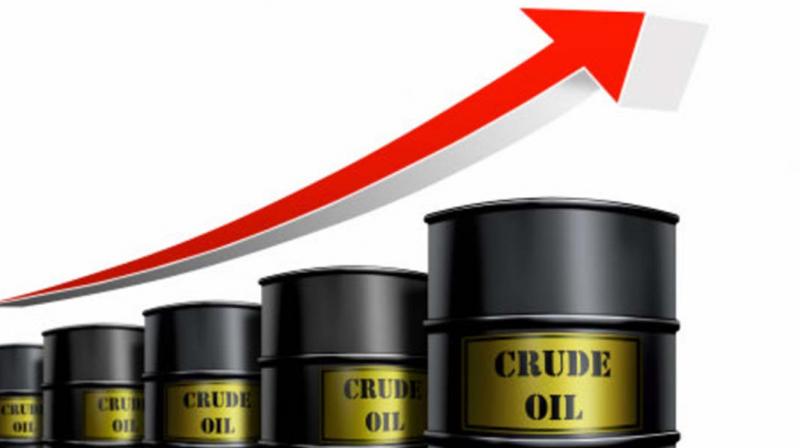Oil rose about 1% on Friday after attacks on two oil tankers in the Gulf of Oman this week raised concerns about potential supply disruptions, but prices remained on track for a weekly loss on fears that trade disputes will dent global oil demand.
Brent crude futures were up 66 cents at $61.97 a barrel by 10:57 a.m. EDT (1457 GMT). U.S. West Texas Intermediate crude futures were up 49 cents a barrel at $52.79.
The attacks on oil tankers near Iran and the Strait of Hormuz pushed up oil prices by as much as 4.5% on Thursday.
It was the second time in a month tankers have been attacked in the world’s most important zone for oil supplies as tensions increase between the United States and Iran. Washington blamed Iran for Thursday’s attacks, prompting a denial and criticism from Tehran.
“Yesterday’s attacks on the Japanese and Norwegian tankers in the Gulf of Oman underscore the severity of the security risks stemming from the Iran crisis and the difficulty of achieving a diplomatic off-ramp as long as the crippling U.S. sanctions remain in place,” RBC bank said.
Still, Brent was on course to register a weekly decline of about 2% and U.S. crude was down nearly 3%.
“The deteriorating demand outlook is holding back prices, despite these tensions,” said John Kilduff, a partner at Again Capital LLC in New York.
Slowing economic conditions have eaten into demand growth, overshadowing ongoing tensions between the U.S. and Iran, Kilduff said. As a result, prices may be stuck in a holding pattern. “We are stalemated here.”
The International Energy Agency cut its demand growth forecast for 2019 by 100,000 barrels per day (bpd) to 1.2 million bpd, citing worsening prospects for world trade.
However, the Paris-based agency said it expects demand growth to climb to 1.4 million bpd in 2020.
On Thursday, the Organization of the Petroleum Exporting Countries cut its 2019 forecast for growth in global oil demand even lower than the IEA, to 1.14 million bpd.
On the supply side, U.S. sanctions on Iran and Venezuela, an output cut pact by the Organization of the Petroleum Exporting Countries (OPEC) plus its allies, fighting in Libya and attacks on tankers in the Gulf of Oman added only limited uncertainty to supply, the IEA said.
Surging U.S. supply, as well as gains from Brazil, Canada and Norway, would contribute to an increase in non-OPEC supply of 1.9 million bpd this year and 2.3 million bpd in 2020.
The weekly U.S. rig count, an indicator of future production, is due at 1 p.m.
Tensions in the Middle East have escalated since U.S. President Donald Trump withdrew from a 2015 multinational nuclear pact with Iran and reimposed sanctions, especially targeting Tehran’s oil exports.
Iran, which has distanced itself from the previous attacks, has said it will not be cowed by what it describes as psychological warfare.
U.S. Secretary of State Mike Pompeo said the United States has assessed that Iran was behind the attacks on Thursday.
The U.S. military later released a video that it said showed Iran’s Revolutionary Guard removing an unexploded mine from the side of a Japanese-owned oil tanker.
REUTERS


